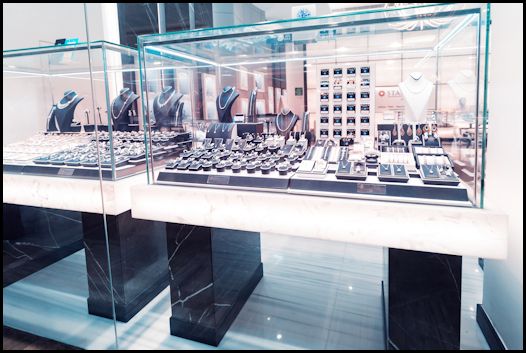Re-Imagine the Store Experience

Preparing for the next normal, forward-thinking retailers must redefine the role of their store.
At some point, retail stores will re-open, but unless specialty retailers like jewelers re-define the role of the store and revamp store operations, they will be ill prepared for the post-COVID-19 future.
This was the message McKinsey & Company expressed in a white paper released in April. “The timing is uncertain and will differ across U.S. markets,” the management-consulting firm describes of re-opening efforts, “but what is certain is that stores can’t simply pick up where they left off. They will need to reset cost structures and prepare their workforce for the next normal.”
 COVID-19 has changed consumer behavior, permanently, finds McKinsey, and retail stores will need to take these new behaviors into account to maximize their potential when they emerge from this crisis.
COVID-19 has changed consumer behavior, permanently, finds McKinsey, and retail stores will need to take these new behaviors into account to maximize their potential when they emerge from this crisis.
Preparing for the next normal, forward-thinking retailers must redefine the role of their store, streamline operations, and re-evaluate networks advocates the consulting firm.
Build omni-channel staff. Retailers should invest in training and equipping store associates to engage with customers online, so that store staff can guide customers at the start of the product-discovery journey and interact with them post-purchase, advocates McKinsey, noting that retailers with omni-channel mindset could reward associates for influencing online sales ilocal zip codes.
Promote virtual service. Social distancing needs to be maintained inside the store for both employees and customers. The Jewelers of America (JA) Back to Basics Toolkit advocates jewelers set appointment times so customers can work with a sales associate one-on-one to ensure social distancing and provide an enhanced customer experience. JA suggests jewelers schedule virtual visits, set times to speak with customers via FaceTime or Zoom, as well as continue to promote their e-commerce platforms for shop-at-home.
Consider your store layout and employee spaces: When developing cleaning protocols, your broader health and social distancing plans will need to consider both your storefront and backroom/break room set up, advocates JA. Do not have seating close together and do develop schedules and guidelines for breaks.
and social distancing plans will need to consider both your storefront and backroom/break room set up, advocates JA. Do not have seating close together and do develop schedules and guidelines for breaks.
Visible Hygiene is reassuring to both employees and customers, reminds Kristie Nicolosi, president and CEO of The Kingswood Company. “Provide a tray with cleaner, paper towels, microfiber/polishing cloths for each associate to use each day or at each counter. Set up ultrasonic cleaning stations around the store. Designate a central location to collect and clean jewelry after it is tried on and before returning to the case. Hand wash after each customer. Jewelers can win the cleaning game, as cases and merchandise are easy to clean.”
Engage a multi-sensory retail experience. While brick-and-mortar retailers wring their hands about the sad state of affairs in physical retail, they may be overlooking the most powerful competitive weapon at their disposal and one that e-commerce retailers cannot replicate: their ability to engage shoppers’ human dimension through their five senses, advocates Pam Danziger, president of the luxury marketing firm in Stevens, Pennsylvania. “A multi-sensory retail experience captivates and engages customers at their emotional core.”
The result of implementing multi-sensory retail will be customers who spend more time in the store, spend more money when they are there, and come back more often. Multi-sensory retail is the ultimate in experiential retailing. “Retailers need to take a step back, get above the fray, and assess what their brand ultimately means and how they can communicate that consistently across all five senses,” Danziger encourages. “Such messaging can cement the brand in customers’ memories because brands operate in the emotional space.”
 Redefine the role of the store. Unless stores offer consumers a compelling value proposition, store traffic, which was already thinning pre-COVID, will “slow to a trickle”, reports McKinsey. Consumers are used to staying home now for weeks at a time and buying a variety of products online. In the future, they won’t visit stores unless retailers give them good reason to. So retailers must envision a new role for their stores, and execute surgical changes to store formats and customer experience. To cater to changing customer preferences, stores must deliver a superior product-discovery experience and provide access to exclusive merchandise (i.e. “in store only” and “in store first” product launches).
Redefine the role of the store. Unless stores offer consumers a compelling value proposition, store traffic, which was already thinning pre-COVID, will “slow to a trickle”, reports McKinsey. Consumers are used to staying home now for weeks at a time and buying a variety of products online. In the future, they won’t visit stores unless retailers give them good reason to. So retailers must envision a new role for their stores, and execute surgical changes to store formats and customer experience. To cater to changing customer preferences, stores must deliver a superior product-discovery experience and provide access to exclusive merchandise (i.e. “in store only” and “in store first” product launches).
Automate and simplify. To support reduced staffing levels, retailers should digitize and automate in-store activities to free up associates for higher-value work, says McKinsey. This includes automating labor scheduling, expanding the use of self-checkout and mobile checkout, and providing remote-management tools for store and field managers. Retailers might consider dedicating staffing for ship from store, re-designing “buy online, pick up in store” (BOPIS) processes, improving inventory management, and working with the supply-chain function to reduce the end-to-end cost of order fulfillment.
Offer contactless curbside pickup. Know the details and limits of your jeweler’s block insurance coverage when you deliver merchandise outside the store, advises John Kennedy, president of Jewelers Security Alliance. He cautions jewelers against fixing or posting hours for pick-up, which should be by appointment with car description and license plate number obtained beforehand.
“Customers should be told a designated pick-up area as close to the front of the store as possible, and visible from  inside the store, with two employees cooperating on the delivery — one handling the door and watching area, while the other makes the delivery to the car,” says Kennedy. “Inform local police that you are re-opening and will engage in curbside pick-up so that additional patrols can be made to your location.”
inside the store, with two employees cooperating on the delivery — one handling the door and watching area, while the other makes the delivery to the car,” says Kennedy. “Inform local police that you are re-opening and will engage in curbside pick-up so that additional patrols can be made to your location.”







